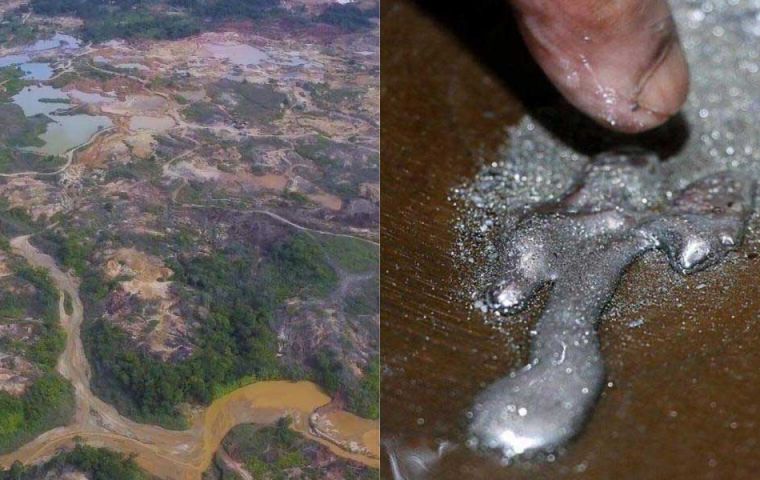MercoPress. South Atlantic News Agency
Brazilian rivers in Amazon face mercury contamination risk
 Mercury accumulates in the food chain, especially in fish consumed by the local population
Mercury accumulates in the food chain, especially in fish consumed by the local population Four rivers in Amazonian indigenous territories were found to be at a high risk of mercury contamination, above levels considered safe, Agencia Brasil reported this week citing a study by the NGO WWF-Brazil.
The results indicate an “extremely high risk” of contamination in more than half of the analyzed sub-basins. The projection was based on a probability model developed by the US Environmental Protection Agency.
This model used data from the “Mercury Observatory” on the distribution and accumulation of the metal in the four basins of the Tapajós River (Pará, Mato Grosso, and Amazonas); the Xingu River (Pará and Mato Grosso); and the Mucajaí and Uraricoera Rivers, both of them in northern Roraima, where the Yanomami people live.
Mercury concentrations would be lower in the headwaters of the rivers and would increase along the course of the river. Mercury accumulates in the food chain, especially in fish consumed by the local population.
According to environmental analyst Vitor Domingues, one of the WWF study's authors, one of the great challenges is the scarcity of sample data. Hence the need for the data to be projected. The result is that most of these sub-basins would not meet the standards established in the Brazilian environmental legislation.
The study also includes several recommendations, such as more accurate monitoring adapted to the conditions of the different sub-regions and the creation of an information system to support governmental actions.




Top Comments
Disclaimer & comment rulesCommenting for this story is now closed.
If you have a Facebook account, become a fan and comment on our Facebook Page!